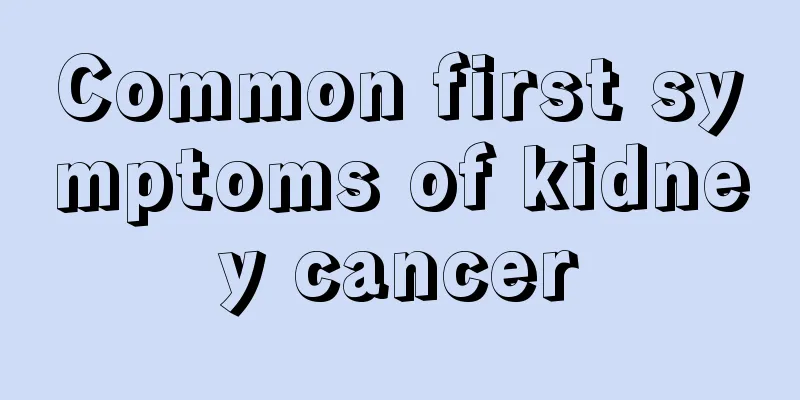Can coffee grounds remove formaldehyde?

|
Coffee is a very common thing in our lives. Recently, it has been rumored online that coffee grounds can remove formaldehyde. In fact, this is incorrect. Coffee grounds cannot remove formaldehyde. They can only cover up the smell of formaldehyde. Moreover, coffee grounds can paralyze people in the room. Although coffee grounds cannot remove formaldehyde, coffee tea is not without any use. Coffee grounds can be used to grow flowers. The best way to remove formaldehyde is ventilation. When it comes to formaldehyde, most people will avoid it, and even turn pale at the mention of the word "aldehyde". After the decoration of a new house is completed, many people will choose to place formaldehyde-absorbing tools in indoor cabinets, wardrobes and other furniture, or use ventilation valves, purification and other methods to help remove formaldehyde. However, there are many different opinions, and there are still some exaggerated misunderstandings about the methods of removing formaldehyde.Misunderstandings about Formaldehyde Removal If there is no smell in the room, does it mean there is no formaldehyde? If there is no smell in the room for a short period of time, it does not mean that the formaldehyde content meets the standard. When the formaldehyde content exceeds the standard by 2-3 times, no obvious odor can be smelled, and it may also be masked by other odors. Formaldehyde is a gas that is extremely difficult to volatilize and can stay indoors for as long as 3-15 years. Can the use of environmentally friendly building materials avoid the occurrence of formaldehyde? In fact, environmentally friendly building materials do help reduce harmful gases in the room, but even if all environmentally friendly building materials are used, the air quality may still exceed the standard in the end. Most environmentally friendly building materials only have harmful substance content and harmful gas emissions below a certain standard, but they are not completely free of harmful substances and do not emit harmful gases. In addition, factors such as the decoration design, room structure, ventilation conditions, and the superposition effect of harmful gases still cannot guarantee that the indoor air quality after the room is decorated will meet the standard.Can fumigating vinegar remove formaldehyde? Vinegar is an acidic substance and has a weak effect of neutralizing ammonia in the air, but it will not react with other harmful components such as formaldehyde. Therefore, this method of removing formaldehyde is not advisable. Studies have shown that excessive formaldehyde concentration can be harmful to the body. When the formaldehyde concentration in the air reaches 0.06-0.07 mg/m3, children will experience mild asthma; when the formaldehyde concentration in indoor air reaches 0.1 mg/m3, there will be odor and discomfort; when the formaldehyde concentration exceeds 0.6 mg/m3, it will cause nausea and vomiting. For the health of your family, what are some common and effective methods for removing formaldehyde?
Formaldehyde is a volatile substance. Open all the doors and windows in the room, maintain air convection inside and outside the house, and expel harmful substances. It is simple and cost-free. However, please be sure to close the doors and windows in time to prevent theft. 02Plant adsorption When there is sufficient light during the day, plants can absorb some harmful substances through photosynthesis. Chlorophytum and ivy can absorb some harmful substances in the room. However, after the new house is renovated, formaldehyde from furniture continues to be released, and plants can only play an auxiliary role in controlling harmful substances such as formaldehyde and benzene. 03Activated carbon adsorption Activated carbon, coal ash, and grapefruit peel can improve air quality through adsorption. Placing about 50g of activated carbon per square meter indoors can have a good adsorption effect on formaldehyde, but at the same time, attention should also be paid to the replacement of the activated carbon, which is generally once every 7-8 months. 04Maya blue adsorption Maya blue is a highly efficient formaldehyde removal material that controls indoor air pollution by adsorption and decomposition. The developed pores of Maya blue can absorb formaldehyde and other pollutant molecules, and then decompose the pollution. The decomposition components in Maya Blue can decompose pollutant molecules such as formaldehyde, benzene, TVOC, etc. into harmless gases commonly found in the air, such as oxygen, carbon dioxide, and nitrogen, and then continue to absorb and decompose, forming a virtuous formaldehyde removal cycle. 05Professional formaldehyde removal agency Formaldehyde pollution sources are divided into long-term pollution sources and short-term pollution sources. To effectively deal with formaldehyde, it is necessary to scientifically treat it from the root according to different sources and release cycles from the beginning of decoration. Prevention is better than cure. After decoration, please ask a professional formaldehyde removal company to manage other formaldehyde pollution sources for the most thorough elimination. |
<<: Clinical significance of D-dimer
>>: Are stink bugs harmful to humans?
Recommend
How to close the everted lower lip
Not everyone has a perfect lip shape. Many people...
I keep farting after eating spirulina
Everyone knows that there are many Helicobacter p...
What can I eat for dinner to lose fat
Fat is a very important substance in the body. Fa...
The best medicine for lowering creatinine
Lowering creatinine is a problem that has attract...
What is sinus arrest?
Sinus arrest refers to the cessation of impulses ...
What happens if there is a lump on the gum?
The basis for tooth growth is the gums. Although ...
What to do if you are impetuous
Many parents will find that their children are im...
Symptoms of lip inflammation
Lip irritation refers to the lips, which are the ...
Dull pain in lower abdomen after moxibustion
The pain in the lower abdomen after moxibustion i...
What nutritional supplements should be given for fractures
Many people are afraid of fractures. If fractures...
How can I remove oil stains from clothes?
When we eat, it is inevitable that clothes will g...
What is the stratum corneum
To explain what the stratum corneum is, we must f...
Is chemotherapy or radiotherapy better for elderly people with advanced nasopharyngeal carcinoma?
Is chemotherapy or radiotherapy better for elderl...
Why is prostate cancer becoming more common among young people? Causes of prostate cancer
If a man has a prostate disease, it will cause sy...
What is the method to remove grease from pots
Every time after cooking, thick grease will remai...









